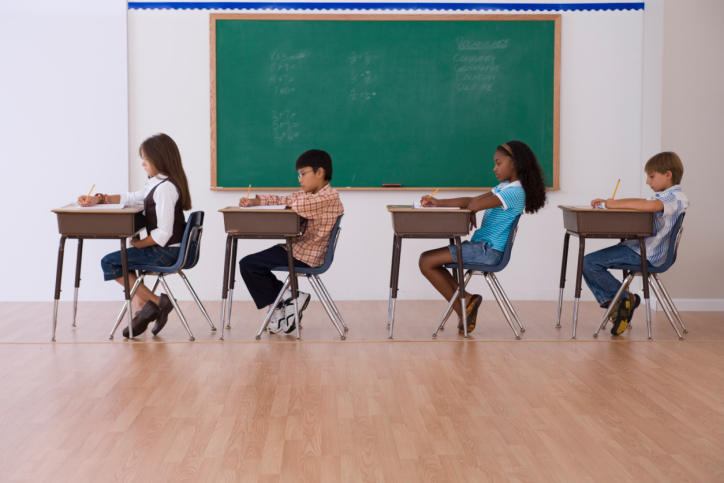“I wish I could of study longer and harder. . . . What I had learn was that If I had study more I think that I would of got a better grade.”
Writing sample from freshman at Laney College, Oakland
“I see high school graduates who cannot add 10 and 15 without a calculator.”
Math instructor at Laney College, Oakland
Although Governor Pete Wilson in September signed a bill to end social promotion of unprepared students in California’s public schools, his action came too late for one out of every two California State University freshmen, who must take remedial courses in English or math before they can enroll in college courses.
Of the 25,300 first-time freshmen entering CSU campuses in fall 1997, 47 percent were required to take remedial English, and 54 percent remedial math. Nationally, about 30 percent of first-time college students must take remedial classes in reading, writing, and math.
“It’s frustrating to be here in college learning what they’re supposed to teach me in high school,” Alaki Fifita told the San Francisco Chronicle. Fifita, a graduate of Fremont High School in Oakland now enrolled in a remedial English class at California State University at Hayward, said “When you get As in high school it may mean something on paper, but it doesn’t mean anything mentally if they’re not teaching you the basics.”
Thousands of students like Fifita are finding, to their dismay, that they must pay for an extra one or two years in college to learn what taxpayers already paid for them to learn in grades K-12: reading, writing, and basic math. Although each of California’s approximately 1,000 school districts has a written policy on promoting and retaining students, promotion requirements are very loosely applied.
Under the plan approved by Governor Wilson, which included $105 million for remediation programs, schools will now be required to base promotion decisions in grades 2-9 on how well students perform on the state’s basic skills test or on their classroom studies. California thus becomes the fourth state this year to legislate against social promotion, the others being Delaware, South Carolina, and Wisconsin.
If social promotion is a serious problem in California–producing as many as one in two high school graduates who cannot read, write, or do math properly–the state’s sky-high dropout rate is just as serious.
Although the state claims a dropout rate of only 13.5 percent, Sacramento Bee reporter Deb Kollars says the figure is closer to 34 percent. According to her analysis, only two out of three ninth-graders in California’s public schools actually walk out four years later with a high school diploma.
Kollars notes that in 1993, there were 406,551 ninth-graders enrolled in California’s public schools. Four years later, there were only 269,071 public school graduates, a loss of 34 percent.
The state reports a much lower dropout rate because the California Department of Education fails to label “dropouts” tens of thousands of students who in fact drop out of school. The discrepancy arises because local schools often under-report dropouts by claiming that some dropouts move out of state or go on to community colleges without high school diplomas.
“Despite the seriousness of the under-reporting problem, the state does not audit dropout figures put out by local schools,” notes Lance T. Izumi of the Pacific Research Institute for Public Policy. But according to Kollars, even these under-reported students are not enough to account for the majority of students who don’t graduate and never earn a high school diploma.
George A. Clowes is managing editor of School Reform News.
For more information …
A four-page July 1998 report by Lance T. Izumi, published by the Pacific Research Institute, is available through PolicyBot. Point your Web browser to http://www.heartland.org, click on the PolicyBot icon, and search for old document #2177106, “A Ten-Point Agenda for Reforming Education in California.”




